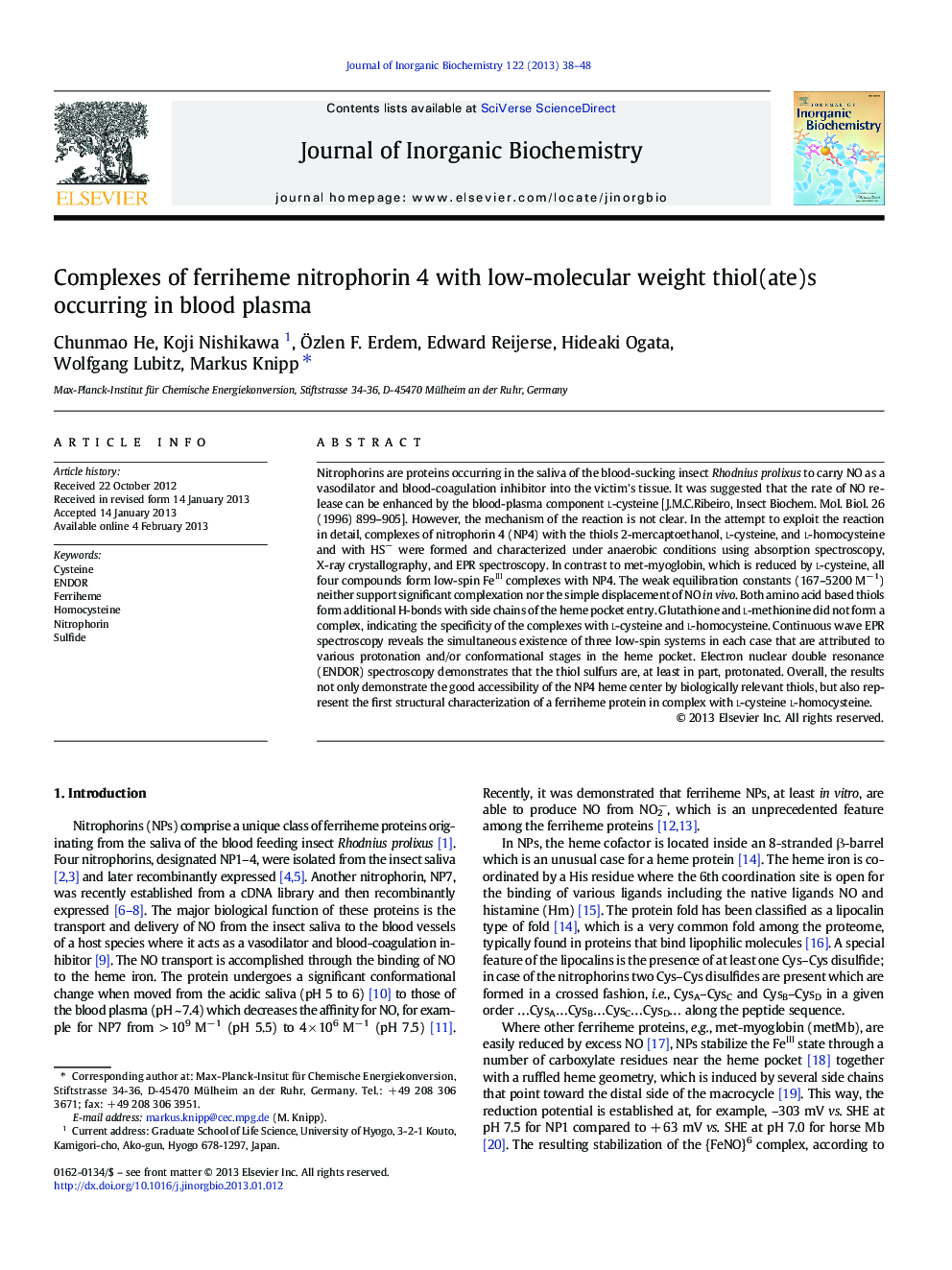| Article ID | Journal | Published Year | Pages | File Type |
|---|---|---|---|---|
| 1316009 | Journal of Inorganic Biochemistry | 2013 | 11 Pages |
Nitrophorins are proteins occurring in the saliva of the blood-sucking insect Rhodnius prolixus to carry NO as a vasodilator and blood-coagulation inhibitor into the victim's tissue. It was suggested that the rate of NO release can be enhanced by the blood-plasma component l-cysteine [J.M.C.Ribeiro, Insect Biochem. Mol. Biol. 26 (1996) 899–905]. However, the mechanism of the reaction is not clear. In the attempt to exploit the reaction in detail, complexes of nitrophorin 4 (NP4) with the thiols 2-mercaptoethanol, l-cysteine, and l-homocysteine and with HS− were formed and characterized under anaerobic conditions using absorption spectroscopy, X-ray crystallography, and EPR spectroscopy. In contrast to met-myoglobin, which is reduced by l-cysteine, all four compounds form low-spin FeIII complexes with NP4. The weak equilibration constants (167–5200 M− 1) neither support significant complexation nor the simple displacement of NO in vivo. Both amino acid based thiols form additional H-bonds with side chains of the heme pocket entry. Glutathione and l-methionine did not form a complex, indicating the specificity of the complexes with l-cysteine and l-homocysteine. Continuous wave EPR spectroscopy reveals the simultaneous existence of three low-spin systems in each case that are attributed to various protonation and/or conformational stages in the heme pocket. Electron nuclear double resonance (ENDOR) spectroscopy demonstrates that the thiol sulfurs are, at least in part, protonated. Overall, the results not only demonstrate the good accessibility of the NP4 heme center by biologically relevant thiols, but also represent the first structural characterization of a ferriheme protein in complex with l-cysteine l-homocysteine.
Graphical abstractThe X-ray structures of the heme protein nitrophorin 4 in complex with the three thiolates cysteine, homocysteine, and mercaptoethanol and with sulfide were solved. In all cases, the heme remains in the ferric state and specific side-chain interactions with the ligand are formed.Figure optionsDownload full-size imageDownload as PowerPoint slideHighlights► X-ray structures of nitrophorin 4 with three thiolates and sulfide were solved. ► Cysteine, homocysteine, mercaptoethanol, and sulfide coordinate the heme iron. ► The heme remains in the ferric state. ► Specific side-chain interactions with the ligand are formed. ► Pulsed EPR indicates that the sulfur of the thiolates is partially protonated.
